After losing a limb, the body starts a new kind of healing. This healing is delicate, especially in the area where the limb was removed. That part of the body, called the residual limb, needs careful attention. It’s not just about recovery—it’s about protection.
One of the biggest risks during this time is infection. When the skin is broken, or when wounds haven’t fully closed, bacteria can enter easily. And when that happens, it slows everything down. It can cause pain, delay prosthetic use, and in some cases, lead to serious health problems.
The good news is that most infections can be prevented. With the right care, the residual limb can heal well and become strong enough for future movement, prosthetic fitting, and daily life. But that care needs to be consistent. It needs to be part of your everyday routine.
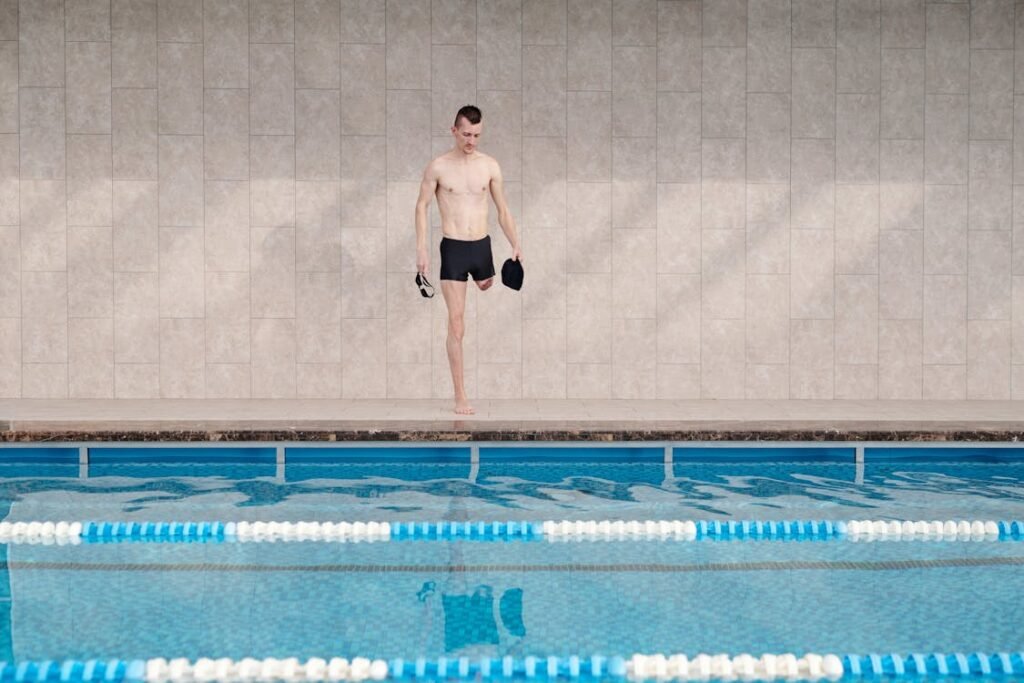
Caring for the Residual Limb in the Early Days
The first few weeks after an injury or amputation are the most important for the long-term health of the residual limb. During this time, the skin, tissue, and nerves are in a delicate state.
They’re adjusting to the trauma and beginning to rebuild. This is also the time when the risk of infection is highest—so attention to detail matters.
The goal in these early days is simple: keep the wound area clean, dry, and safe.
Creating a Safe Healing Environment
Right after the injury or surgery, the body works hard to protect itself. Swelling is part of this. So is redness. These are normal at first, but they must be watched closely.
The area around the wound is like a construction site—it needs space, the right tools, and safety from outside threats.
The wound dressing should be changed exactly as the doctor or nurse instructs. Not more, not less. Changing it too often can disturb healing skin. Leaving it too long can trap moisture and germs.
Clean hands are essential. Before touching the wound or bandage, hands must be washed with soap and water—every single time.
The room where dressing changes happen should be as clean as possible. It’s best to avoid dust, strong winds, pets, or dirty surfaces. Even the smallest particles can cause irritation. Airflow is good, but direct fan or air conditioning blasts on an open wound should be avoided.
In the early stages, it’s also important to avoid putting pressure on the residual limb. It should be supported, but not pressed against hard surfaces or tight fabrics. This prevents skin damage and supports blood flow.
Signs of Normal Healing vs. Infection
Knowing what’s normal—and what’s not—can give you peace of mind and help you act early if something isn’t right.
Some swelling and mild discomfort are expected. The skin around the area might feel warm, especially in the first few days. Light pink or clear fluid may come out of the wound. These are all signs the body is responding and working.
But there are warning signs that need medical attention. If the skin around the wound becomes very red, especially if the redness spreads, that can be a sign of infection.
If the fluid from the wound turns yellow, green, or has a foul smell, that also signals trouble. Fever, chills, sharp pain, or a feeling of heat deep in the limb could all mean that bacteria have entered.
When these symptoms appear, they should never be ignored. Early treatment with antibiotics or wound care adjustments can stop an infection from becoming serious.
Checking the wound at the same time each day helps spot changes. Taking a photo with your phone every couple of days (if the wound is visible) can also help track healing over time and catch problems early.
Keeping the Skin Around the Wound Healthy
Even if the wound itself is healing well, the skin around it can still become irritated. That irritation, if not managed, can crack or open—giving germs a new way in.
Using a gentle, unscented moisturizer on the nearby skin (not on the wound itself) keeps it flexible and strong. Dry, tight skin can break more easily. But too much moisture, or using oily creams directly on the wound, can block airflow and slow healing.
If the skin becomes itchy, that’s often a sign it’s drying out or responding to friction. Resist the urge to scratch. Instead, speak with a doctor about safe creams or cooling sprays that can ease the itch without risk.
Tight bandages or wrinkled dressings can also rub the skin. Smooth application is important. If the bandage feels too snug, or if there’s pressure or tingling, it’s better to redo the wrap than to ignore the discomfort.
Preparing the Limb for Future Use
While healing is the priority, it’s never too early to think about preparing the residual limb for long-term use. That means paying attention to shape, sensitivity, and swelling.
Keeping the limb slightly raised helps reduce swelling in the early days. Later, gentle positioning exercises (as guided by a doctor or therapist) help prevent stiffness.
Over time, some light compression may be recommended to shape the limb for a prosthetic. But this should only be done under professional guidance—doing it too soon or too tightly can cause harm.
Touching the limb gently with a clean cloth or towel can help reduce sensitivity. This practice, called desensitization, helps the skin and nerves adjust. It also lowers the risk of phantom pain later on. Like everything else, this must be done gently and consistently—not rushed.
Through all of this, rest is key. The body does most of its healing during quiet moments. Protecting the residual limb means protecting your energy, your immune system, and your peace of mind.
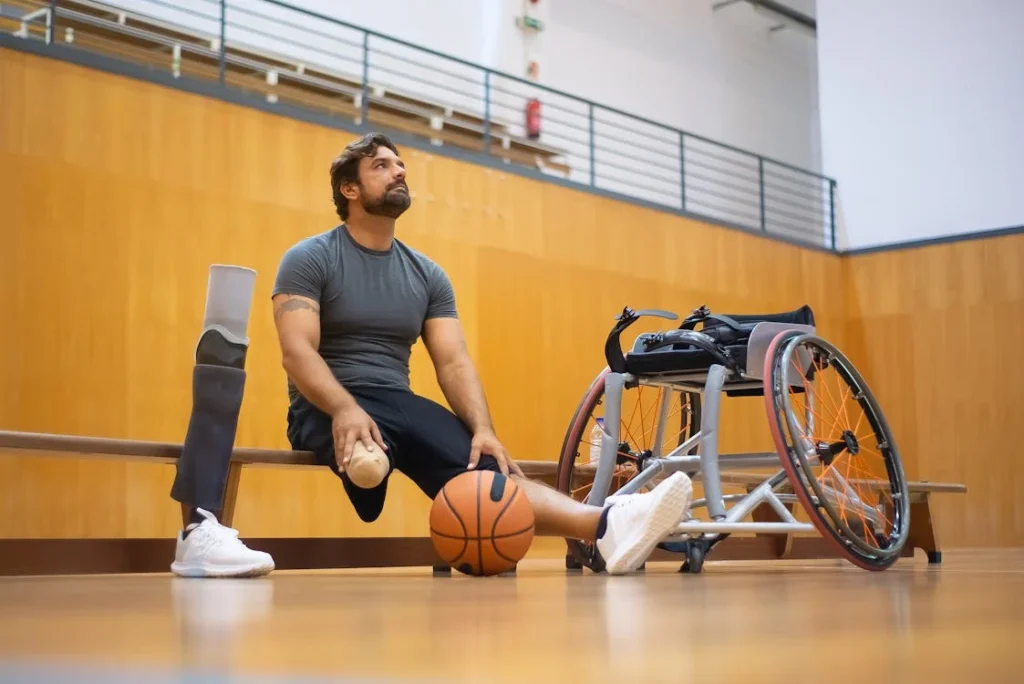
Long-Term Residual Limb Care and Hygiene Routines
Once the initial wound has healed and the stitches have been removed, many people assume that the risk of infection is over. But the truth is, long-term care matters just as much as early care.
Infections can still happen weeks, months, or even years after an amputation—especially if the skin breaks down or gets irritated. The best defense is a simple, consistent routine that keeps the residual limb clean, protected, and comfortable.
Daily Cleaning: Simple Steps That Make a Big Difference
Washing the residual limb each day is one of the most important habits to build. It doesn’t need to be complicated. In fact, the simpler the routine, the easier it is to stick to.
Use warm water—not hot—and a mild, unscented soap. Strong perfumes or chemicals can irritate healing skin and cause dryness. Pat the area gently with your hands, not a rough cloth, and rinse thoroughly. Any soap left behind can cause itching or irritation.
After washing, the limb should be dried completely. Moist areas, especially in folds of skin or around scar lines, can trap bacteria and lead to skin problems. A soft towel and gentle blotting work best. Avoid rubbing, especially if the skin is sensitive.
Some people find it helpful to wash the limb at the same time every day—like before bedtime or first thing in the morning—so it becomes part of the daily rhythm. That consistency helps prevent buildup of sweat, dust, and bacteria from daily movement or prosthetic use.
Skin Checks and Monitoring
Once the limb is being used more actively—whether for balance, mobility, or with a prosthetic—it becomes even more important to check for small signs of irritation or damage. A tiny blister, red patch, or scratch can quickly turn into something more serious if unnoticed.
Taking two minutes each day to look over the entire residual limb in good lighting can prevent larger problems later. If reaching or seeing the area is hard, a mirror or phone camera can help.
If needed, a family member or caregiver can assist, but privacy and comfort should always be respected.
Pay attention to areas that rub against clothing, chairs, or a prosthetic socket. These spots are more likely to get irritated. If redness appears, and it doesn’t fade within 30 minutes after removing pressure, that’s a sign the skin may be under too much stress.
Even if no major issues are seen, writing down any small changes in a notebook or phone app can help track patterns over time. These notes are useful for follow-up visits and adjustments to prosthetics or therapy routines.
Reducing Risk During Daily Activities
Daily movement—walking, sitting, getting dressed, using a prosthetic—puts pressure on the residual limb. This pressure is normal, but it must be balanced with care. Rushing through your day without awareness can lead to skin breakdown, sweat buildup, and overlooked injuries.
Choosing the right fabrics matters. Loose, breathable clothing made of cotton or soft blends can reduce friction. Synthetic materials that trap sweat or stick to the skin should be avoided, especially in warm weather.
During hotter months, sweat can cause more than just discomfort. It creates the perfect place for bacteria to grow. Using a clean, dry cloth to gently pat the area throughout the day can help.
Some people also find non-alcoholic wipes helpful—but only if approved by their doctor or prosthetist.
If you’re using a prosthetic, it’s important to clean the inside of the socket regularly. Even if the residual limb is clean, sweat and skin cells can build up inside the device. This invisible layer becomes a breeding ground for bacteria and can transfer back to the skin.
Cleaning the socket usually involves a damp cloth and mild soap, followed by drying it fully before wearing. It only takes a few minutes, but skipping it can lead to recurring skin issues.
If you’re still adjusting to using your prosthetic, check with your clinic or provider about the right products and cleaning methods for your specific device. Different materials and liners may need different care.
Managing Dryness and Irritation Without Causing Harm
Sometimes, the skin on the residual limb becomes dry or flaky. This is common, especially if the area is frequently cleaned or exposed to the air. It’s tempting to use thick creams or heavy lotions—but not all moisturizers are safe for healing or prosthetic use.
If you wear a prosthetic during the day, it’s better to apply any moisturizer at night. That gives the skin time to absorb it fully before any pressure is added.
Look for gentle, fragrance-free products designed for sensitive skin. Avoid oily or greasy formulas that can clog pores or cause slippage inside the prosthetic socket.
If itching, cracking, or rashes continue despite regular care, it’s important to see a doctor or skin specialist. These symptoms can be caused by allergic reactions, fungal infections, or even the wrong type of liner material.
Staying Ahead of Common Skin Problems
Some skin conditions are more common for people with amputations. These include heat rash, fungal infections (especially between skin folds), and pressure sores. The earlier these are caught, the easier they are to treat.
Any spot that feels sore, itchy, or unusually warm should be looked at—especially if it’s near a pressure point or under a liner. Even if it looks small on the outside, deeper tissue can be affected.
Don’t try to treat serious skin issues at home with over-the-counter creams unless approved by your doctor. Some treatments may make the problem worse. When in doubt, always consult your care team.
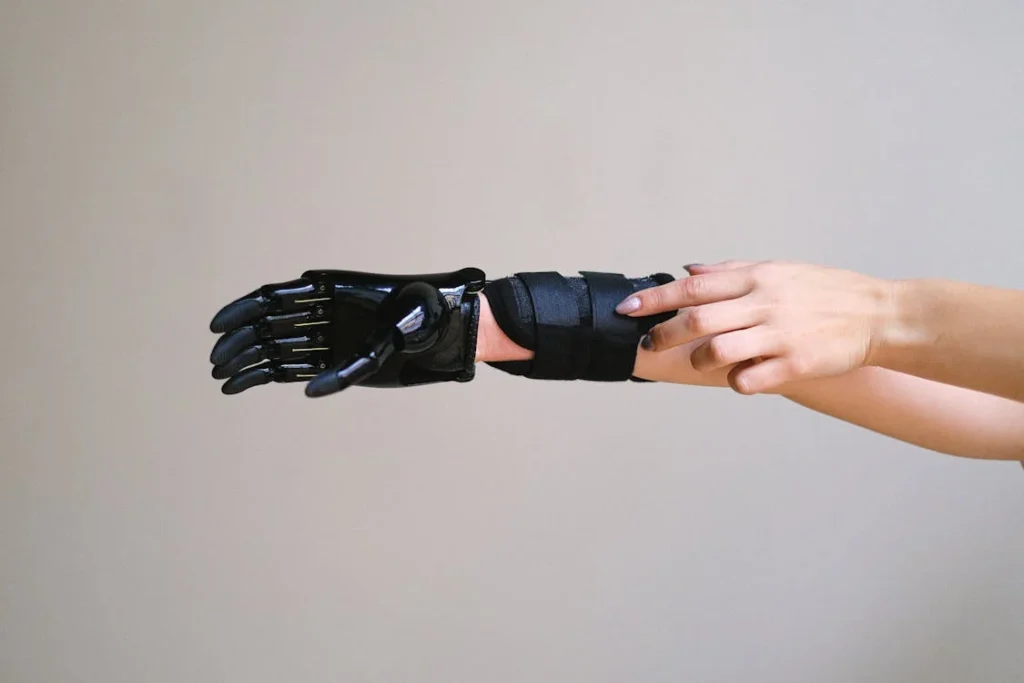
Protecting the Residual Limb While Using a Prosthetic
Wearing a prosthetic is a major step in the recovery journey. It allows for mobility, independence, and a return to everyday life. But with all those benefits comes a new responsibility—taking care of the residual limb while using the device.
A prosthetic, especially when worn for long periods, creates pressure, heat, and friction. If not managed well, this can lead to sores, skin breakdown, and infection.
Keeping the limb healthy and comfortable requires some adjustments, good hygiene, and an honest understanding of how your body responds over time.
Starting Slowly and Listening to Your Body
When first learning to use a prosthetic, it’s important to ease into it. The skin and soft tissue on the residual limb need time to get used to the pressure.
Wearing the prosthetic for short periods at first, then gradually increasing the time, gives the body a chance to adapt without becoming overstressed.
If the limb feels sore after use, some discomfort is normal—especially in the beginning. But pain, pinching, deep aching, or sharp rubbing are not normal. These may be signs that the socket needs to be adjusted, or that the liner isn’t fitting properly.
Paying close attention to how your body feels before, during, and after using the prosthetic is key. A little awareness each day can prevent major problems later.
Cleaning the Liner and Socket: Your Daily Defense
One of the most common sources of infection isn’t the limb—it’s the liner or socket of the prosthetic. These areas trap sweat and dead skin cells. Left uncleaned, they can grow bacteria, fungi, and even mold, especially in humid or hot weather.
Cleaning the liner daily is not just about smell or comfort—it’s about skin health. Most liners can be wiped down with a damp cloth and mild, fragrance-free soap.
After cleaning, they should be rinsed and dried completely before use. Avoid harsh cleaners or alcohol-based products unless your prosthetist specifically recommends them, as these can damage the material or irritate your skin.
The inside of the prosthetic socket should also be wiped down regularly. Even if you don’t sweat much, bacteria can grow quickly in enclosed spaces. A soft cloth, warm water, and mild soap work best. Make sure no water is left trapped inside, especially near metal components.
If you’re not sure how to clean your specific prosthetic or liner, ask your provider. Different materials may need different care. Getting this right from the start prevents a lot of long-term issues.
Managing Sweat and Friction During Daily Use
Sweat buildup inside a prosthetic is common, especially during warmer months or while doing physical activity. Excess moisture softens the skin, making it easier to break or become irritated. It also increases the chance of bacterial or fungal infection.
Wearing clean, dry prosthetic socks or liners each day helps manage this. If your routine includes physical activity, it’s wise to carry an extra sock or liner with you, and change it if it becomes damp. This small habit keeps the skin drier and more protected.
Friction is another issue. If you notice red areas on your limb that match the shape of your socket or liner, it might be time for a refit. Over time, the shape of the residual limb changes. A socket that once fit well may no longer be ideal.
Check the limb daily for signs of rubbing—especially at the edges of the socket, where most pressure is applied. If the skin is breaking or blistering, stop using the prosthetic and reach out to your prosthetist for guidance.
Waiting too long can turn a minor issue into a serious wound.
Making Seasonal Adjustments
The weather can change how your residual limb and prosthetic interact. In hot weather, sweat increases. In cold weather, the skin may become dry or sensitive. Understanding how the seasons affect your body helps you plan ahead.
During the summer months, showering after activity and using breathable liners can reduce irritation. Avoiding tight clothing or heavy fabrics around the limb also improves airflow. At night, allowing the limb to “breathe” without covering it tightly gives the skin time to recover.
In colder months, keeping the limb warm—but not overheated—is important. Moisturizing regularly prevents dry, cracked skin. But again, avoid greasy lotions if you’ll be wearing the prosthetic shortly afterward. Applying cream at night works best.
Staying consistent with cleaning and inspection, no matter the season, builds trust in your own care routine—and makes spotting problems easier.
When to Ask for Help
It’s normal to have questions or concerns, even months or years after using a prosthetic. If something doesn’t feel right—if there’s pain, irritation, swelling, or skin changes—don’t wait for it to go away on its own. The earlier a problem is caught, the easier it is to fix.
Your prosthetist is there to help. So is your doctor. Keeping them informed, even about small issues, can prevent major setbacks.
Remember, the prosthetic is a tool. It should serve you. If it causes harm, discomfort, or fear, adjustments are possible. You deserve a device that fits your life—not the other way around.
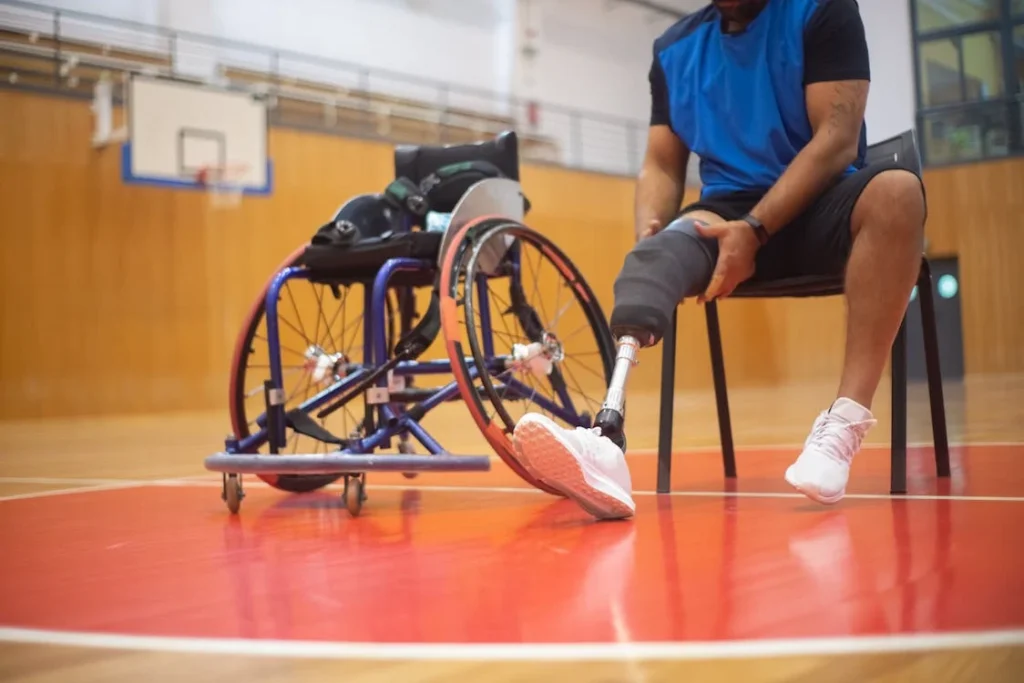
Recognizing Complications and Staying Consistent in Real Life
Even with the best routines, setbacks can happen. A small skin irritation might turn into a sore. An old prosthetic might start rubbing in a new way. Life changes—travel, weather, stress—can throw off your balance, both physically and emotionally.
But the more prepared you are, the easier it is to spot trouble early and handle it with confidence.
Good care is not about being perfect. It’s about being consistent. That’s what keeps the residual limb healthy—not just in the short term, but for years to come.
Spotting Complications Before They Grow
Most major problems start small. That’s why paying close attention to your limb—even when everything seems fine—is important. A little swelling, unusual warmth, dry skin, or extra tenderness might be your body’s early signal that something isn’t right.
Skin that looks red but fades within a few minutes is usually nothing to worry about. But if redness stays for longer than 30 minutes, it’s time to pause and check. If the area feels hot or painful to the touch, or if a sore isn’t healing after a few days, it’s best to speak to your care team.
Infections, especially bacterial ones, don’t always show up with a fever. Sometimes they begin as slow-forming pockets of fluid or skin that just doesn’t heal.
If you notice any thick discharge, strong odors, or increasing discomfort—don’t wait. These signs need attention. Early treatment can prevent a much larger problem.
Even changes in how your prosthetic fits can be clues. If it suddenly feels too loose or tight, or if you start shifting your weight differently, your limb may be changing shape—or reacting to something inside the socket. Trust those signals. They’re your body’s way of asking for care.
Managing Setbacks Without Losing Progress
Healing isn’t a straight line. Even after months of careful care, you might face a setback—like a skin infection, a fall, or irritation from a long day of activity. These moments can be frustrating, but they don’t mean you’ve failed. They just mean your body needs a reset.
In these times, the most important thing is to pause. Remove pressure from the affected area, rest, and reintroduce care slowly. Don’t rush to return to full prosthetic use if your skin is sore or damaged. Give yourself the grace to step back and recover.
If you need to stop using your prosthetic for a few days, let your care team know. They may adjust your routine, liner, or even your socket to help you return to comfort safely.
These pauses are not setbacks—they are part of responsible, long-term self-care.
Keeping a Simple Routine That Works for You
Consistency doesn’t mean complexity. In fact, the simpler your routine, the more likely you are to follow it.
Start by building your care into natural parts of your day. Clean your limb during your morning shower. Check your skin before you go to bed.
Set a reminder to clean your liner every night. Pair each step with something you already do—like brushing your teeth or turning off your lights. Over time, it becomes second nature.
If you’re busy or feeling overwhelmed, choose the one or two steps that protect you most—daily washing and skin inspection. If you can do more, great. But if not, don’t let that stop you. Doing something is always better than nothing.
As your life changes—whether you return to work, travel more, or become more active—adjust your routine, not your commitment. Carry wipes or clean cloths for busy days. Pack a backup liner for longer outings. Keep moisturizer near your bedside.
These small details make a big impact. They keep your limb protected through the ups and downs of life.
Staying Mentally Strong Through the Process
Sometimes, caring for the residual limb feels like a full-time job. It can get tiring. On difficult days, it’s easy to think, Why bother? or I’ll skip today and try again tomorrow.
These feelings are normal. What matters is how you respond to them.
When motivation dips, remind yourself what’s at stake: comfort, movement, freedom. Each step in your care routine protects your ability to live your life on your terms. Each small act is a way of saying, I choose myself.
It also helps to track your care progress over time. Seeing how far you’ve come—even with small wins like fewer skin problems or better prosthetic fit—can reignite your drive.
Some people use journals, checklists, or even a simple calendar with checkmarks. There’s no right way—just the one that works for you.

The Role of Nutrition and Hydration in Residual Limb Health
When we think about healing after a limb injury or amputation, we usually focus on wound care, hygiene, and prosthetic use. But what you put into your body is just as important as how you care for it from the outside.
Nutrition and hydration don’t just keep you healthy overall—they directly affect how your skin repairs, how your immune system fights infection, and how fast your residual limb recovers.
This part of care doesn’t get enough attention. But the truth is, your healing starts in your kitchen.
How Food Affects Skin and Tissue Healing
The skin around the residual limb is constantly working. It stretches, adjusts to new movements, rebuilds from the inside, and protects against germs. To do that well, it needs support—and that support comes from your food.
Protein is one of the most important nutrients for healing. It builds the structure of your skin, muscles, and tissues. Without enough protein, wounds heal slowly, and the skin becomes weaker and more prone to injury.
Foods like lentils, paneer, eggs, fish, and dals are excellent sources. Even something as simple as adding an extra serving of dal or a boiled egg to your meal can make a difference.
Vitamins and minerals also play key roles. Vitamin C helps build collagen, the protein that strengthens skin and prevents reopening of healed areas.
You’ll find it in fruits like oranges, amla, guava, and papaya. Zinc helps the immune system and supports fast healing—you can get it from seeds, nuts, and whole grains.
Iron, found in leafy greens and jaggery, carries oxygen to your tissues, helping them repair faster. Without enough iron, your body may feel tired, and wounds may take longer to close.
Instead of thinking of food as fuel, think of it as a healing tool—one that works quietly but powerfully with every bite.
Hydration and Infection Prevention
Water doesn’t just quench thirst—it powers every healing process in your body. Your skin, tissues, and immune system all rely on proper hydration to function well.
When you’re dehydrated, your skin dries out. Dry skin cracks easily, especially under pressure from a prosthetic. These cracks are small openings for bacteria. The more hydrated you are, the more elastic and resilient your skin becomes.
Water also helps flush out toxins, regulates body temperature, and transports nutrients to where they’re needed most. If you’re healing from an injury or surgery, your need for water is even higher than usual.
A good starting point is to drink small amounts of water consistently throughout the day. You don’t need to gulp litres at once—just build a rhythm. Keeping a water bottle within reach, sipping after meals, or setting gentle reminders can help.
If you live in a hot or humid area, or if you’re sweating more from prosthetic use or rehab exercises, increase your fluid intake. Natural drinks like coconut water, lemon water (without excess sugar), or diluted buttermilk can also support hydration.
Foods That Slow Healing or Irritate the Skin
While many foods support healing, some can make things harder. Processed, fried, or sugary foods may increase inflammation in the body. When inflammation rises, wounds take longer to heal, and the immune system gets distracted from fighting infections.
Too much salt can lead to water retention and swelling, especially around the residual limb. This puts more pressure on the skin and can slow recovery.
If you notice more itching or skin irritation after eating certain packaged snacks or heavily spiced meals, it’s worth paying attention. Your skin often reflects what’s happening inside.
Cutting back on processed snacks and choosing fresh, whole foods more often can make a clear difference over time.
Eating With Purpose, Not Perfection
You don’t need to follow a strict or expensive diet to help your body heal. You don’t need special powders or imported ingredients. Healing happens with simple, local foods—when eaten regularly, in balanced portions, and with care.
What matters is consistency. Regular meals that include a mix of vegetables, protein, healthy fats, and grains give your body a steady supply of what it needs.
Even small changes—like switching from white rice to brown rice once a day, or adding sprouts to your breakfast—build a better foundation for healing.
If you’re unsure where to start, a visit to a local dietitian or even a conversation with your doctor can help. They can guide you based on your body’s specific needs, especially if you have conditions like diabetes, which affect wound healing.
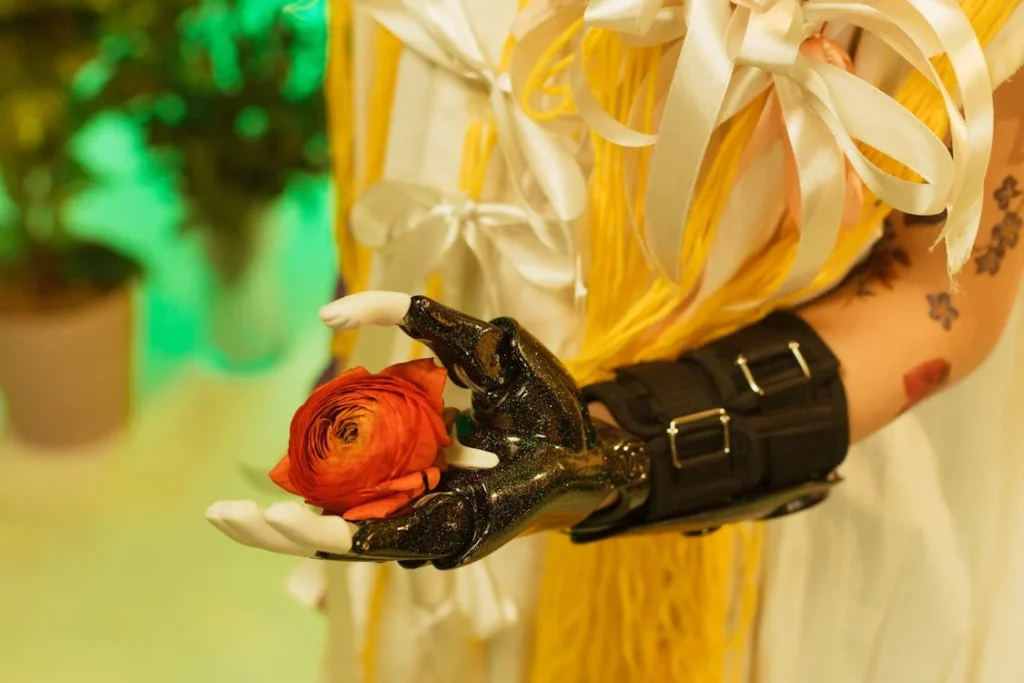
The Hidden Connection Between Stress and Infection Risk
When recovering from limb loss or injury, most people focus on physical care—cleaning the wound, wearing the prosthetic, and following rehab routines. But there’s another part of the body that plays a major role in healing: the mind.
It may sound surprising, but emotional stress can actually increase the risk of infection. It can slow wound healing, weaken the immune system, and make the residual limb more sensitive to pain, pressure, and even touch.
This connection between the brain and the body is powerful—and learning how to manage it is an essential part of post-injury care.
How Stress Affects the Immune System
When the brain feels stressed—whether from fear, frustration, grief, or anxiety—it sends signals throughout the body. One of those signals tells the body to prepare for danger.
In short bursts, this stress response is helpful. It helps you move quickly, make decisions, and protect yourself.
But if stress lingers too long, your body stays in “alert mode.” That alert mode uses up energy, slows down tissue repair, and suppresses the immune system.
This means your skin doesn’t heal as fast. White blood cells don’t fight bacteria as strongly. And wounds—like the one on your residual limb—stay open longer than they should.
This doesn’t just happen with big, dramatic stress. Even quiet stress—like worrying silently, feeling overwhelmed by small tasks, or hiding your emotions—can have the same effect.
The body doesn’t always know the difference between physical threat and emotional tension. It just reacts.
That’s why managing stress is not just about mental peace—it’s about protecting your health in a very real, physical way.
Emotional Tension and Skin Reactions
Stress also affects how the skin behaves. When you’re anxious or tense, the skin becomes more reactive. It might feel itchy, extra sensitive, or hot.
You might notice more sweating, which can lead to moisture buildup inside your prosthetic. You may also experience skin flare-ups, dryness, or pressure rashes—even if your hygiene is perfect.
This isn’t all in your head. It’s the body reacting to emotional strain. And when stress builds up without release, these reactions happen more often—and take longer to settle.
So, if you’ve been following your wound care plan carefully, but are still seeing redness or irritation, it might be time to look inward. What’s going on emotionally? What thoughts keep repeating? Are you giving your mind space to breathe?
Mind-Body Tools That Support Healing
The good news is that just as stress can slow healing, calm and relaxation can speed it up. Simple practices that settle the mind also strengthen the body’s natural repair systems.
Breathing exercises—slow, steady, and deep—signal the brain that there’s no danger. This lowers heart rate, reduces inflammation, and helps your body focus on healing.
Other tools like guided meditation, nature walks, journaling, or even just sitting quietly in a room with soft music can give the mind a break. These are not luxuries. They’re medicine. Not the kind that comes in a bottle, but the kind that starts from within.
You don’t need to set aside an hour a day. Even five minutes of focused calm can make a difference. The goal is not to stop all stress, but to gently remind your body that it’s safe. That healing is allowed.
Asking for Help Is a Form of Strength
Emotional pressure often builds when we try to handle everything alone. But silence doesn’t protect us. In fact, it makes the stress heavier.
If you’re feeling stuck, low, or constantly tense, talking to someone you trust—a friend, family member, counselor, or even a peer who’s walked a similar path—can release that pressure. It doesn’t mean you’re weak. It means you’re human.
In some cases, a psychologist or mental health professional can offer tools that are tailored to your experience—especially if anxiety, depression, or trauma are interfering with your recovery.
At Robobionics, we’ve seen firsthand how emotional health shapes physical recovery. Patients who feel heard, supported, and understood often heal faster—not just on the surface, but deep within.
Conclusion
Protecting the residual limb after injury is about more than just bandages and cleaning routines. It’s a full-body, whole-person effort. From wound care and prosthetic hygiene to nutrition, hydration, stress management, and emotional well-being—every part plays a role in healing.
Infections are common, but they’re not inevitable. With daily attention, a calm and steady routine, and early action when something feels off, you can keep your limb healthy and strong. Your body knows how to heal—it just needs the right support, inside and out.
There’s no perfect system, but there is your system—one that fits your life, your pace, and your goals. Keep listening to your body. Keep asking questions. And most importantly, trust that healing is always possible, one day at a time.



